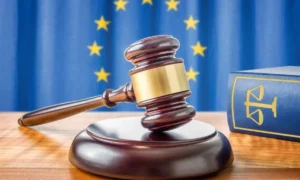White-collar crime refers to financially motivated nonviolent crimes committed by business and government professionals through opportunities arising from their occupation. White-collar criminals often have high-status positions and commit crimes in the context of their work. These types of crimes generally involve deception for illegal financial gain.
Understanding White-Collar Crime
While white-collar crimes may not involve physical violence, they can significantly harm victims through economic damage.
Some key aspects of white-collar crime include:
- It typically involves lies, deception, or breach of trust rather than physical force.
- The perpetrators use their expertise and position within an organization to commit the crime.
- Victims are often large groups of people or organizations rather than individuals.
- Financial damages from white-collar crime can far exceed the profits gained by the criminal.
- Many white-collar crimes go undetected or unreported for long periods.
Understanding the nature and impact of white-collar crime is important for regulating businesses, protecting consumers, and combating financial misconduct.
Types of White-Collar Crime
Some of the most common types of white-collar crime include:
1. Fraud
Deliberately deceiving victims, usually for financial gain. Common fraud schemes target consumers, businesses, the government, and insurers through practices like Ponzi schemes, investment scams, or health care fraud.
2. Insider trading
Trading securities based on confidential or non-public information in violation of fiduciary duty. Insider trading harms investors and undermines fair market operations.
3. Ponzi scheme
An investment scheme that uses funds from newer investors to pay high returns to earlier investors to encourage more investments. This depends on a constant flow of new money to survive and will inevitably collapse. Famous examples include schemes by Bernie Madoff and Allen Stanford.
4. Identity theft and other cybercrimes
Stealing someone’s personal information like Social Security numbers, credit card numbers, or bank account information through digital means to commit fraud or other crimes. Cybercrime enables new opportunities for white-collar criminals.
5. Embezzlement
Theft of money/assets by someone in a position of financial trust. Embezzlement often involves long-term schemes perpetrated by accountants, bookkeepers, executives, and others with access to company funds.
6. Counterfeiting
Production of fake currency, identification documents, hardware, or software to deceive buyers and sellers.
7. Money laundering
The process of hiding or disguising illegally obtained money to make it appear legitimate. Money laundering allows criminals to benefit from the proceeds of illegal activity.
8. Espionage
Stealing trade secrets or classified government information, usually to benefit foreign powers or corporations. Spies inflict economic and security damage through theft of intellectual property.
Classifying White-Collar Crime
White-collar crimes can be broadly grouped into two categories:
1. Individual crimes
Committed by a single person, such as embezzlement, bribery, or tax evasion. Often perpetrated by mid or high-level employees exploiting an opportunity at work.
2. Corporate crimes
Involve intentional wrongdoing by a corporation or multiple co-conspirators within a company. Examples include price fixing, safety violations, environmental pollution, accounting fraud, and anti-competitive practices. Corporate crime is more systematically planned and has wider economic impacts.
A Contributing Factor – The Internet
The rise of internet-connected devices and digital commerce has enabled new forms of white-collar crime in recent decades. Criminals can now remotely commit crimes like hacking, phishing scams, digital piracy, and cryptocurrency theft without physically interacting with victims.
Some key ways the Internet contributes to white-collar crimes include:
- Anonymous online marketplaces let criminals secretly buy/sell stolen data, counterfeit goods, illegal services, and more.
- A wide reach of phishing emails and websites allows scammers to target many potential victims efficiently.
- Cloud services, remote work trends and Bring Your Device policies mean sensitive data is more widely distributed and vulnerable to cybertheft.
- Cryptocurrencies facilitate money laundering and hamper investigators by obscuring transactions’ true source.
- Hacking tools online lowers the technical skills needed for cybercrimes like ransomware and business email compromise scams.
While digitization enables new economic opportunities, it has also opened the door for novel online white-collar offenses. Regulators struggle to keep up with constantly evolving schemes on the internet.
FAQs
The FBI considers healthcare fraud, financial institution fraud, and securities/investment fraud to be the most prevalent white-collar crimes.
Cumulatively white-collar crimes cost hundreds of billions of dollars annually in direct losses. They also undermine public faith in key institutions, disproportionately harming vulnerable groups.
Government organizations like the FBI, SEC, and IRS investigate white-collar offenses within their areas of oversight. They monitor financial transactions, inspect company records, interview witnesses, and build cases against perpetrators.
Investigating sophisticated white-collar schemes requires following complex paper trails, analyzing large datasets for patterns, recruiting informants within implicated organizations, utilizing forensic accountants, subpoenaing banking/corporate records, and seizing computer/phone evidence.










